Editor and art journalist. Formerly associate editor of Brutus magazine, where he was in charge of such special issues as Do you know Hiroshi Sugimoto?, Jakuchu o mita ka (Have you seen Jakuchu)?, Kokuho-tte nani (What is a national treasure)? and Kinkyu tokushu Inoue Takehiko. Co-edited publications include Cartier, Crystallization of Time, Takashi Murakami’s Superflat Collection, Korin & Modern Art and teamLab-tte nanimono (Who or what is teamLab)? Adjunct professor at Meiji Gakuin University and Aichi University of the Arts. Member of the external evaluation committee of the Tokyo Metropolitan Teien Art Museum.
In the fall of 2019, two stage productions co-directed by Hiroshi Sugimoto and the Odawara Art Foundation were performed in quick succession. In September, “At the Hawk’s Well” by William Butler Yeats was staged at the Opéra National de Paris, Palais Garnier, followed by a performance of “Sonezaki Shinju” at New York’s Lincoln Center in October. After watching the two pieces that represent two approaches as contrasting as contemporary ballet and bunraku, art journalist Yoshio Suzuki met Hiroshi Sugimoto for an interview about his take on life and death, which constitutes the very foundation of his work in the realm of performing arts.
“As part of my life work, I have been photographing seascapes for a long time, the aim of which is partly also to explore what life and death are all about. Life is being created, and from ancient times, humans have been looking at the same sceneries as we do today. When I realized that such seascapes evoke the same sympathetic feelings in a lot of people, that came as a surprise, as did the fact that these pictures are being accepted as works of contemporary art. It made me genuinely feel that there is some kind of power in that.”
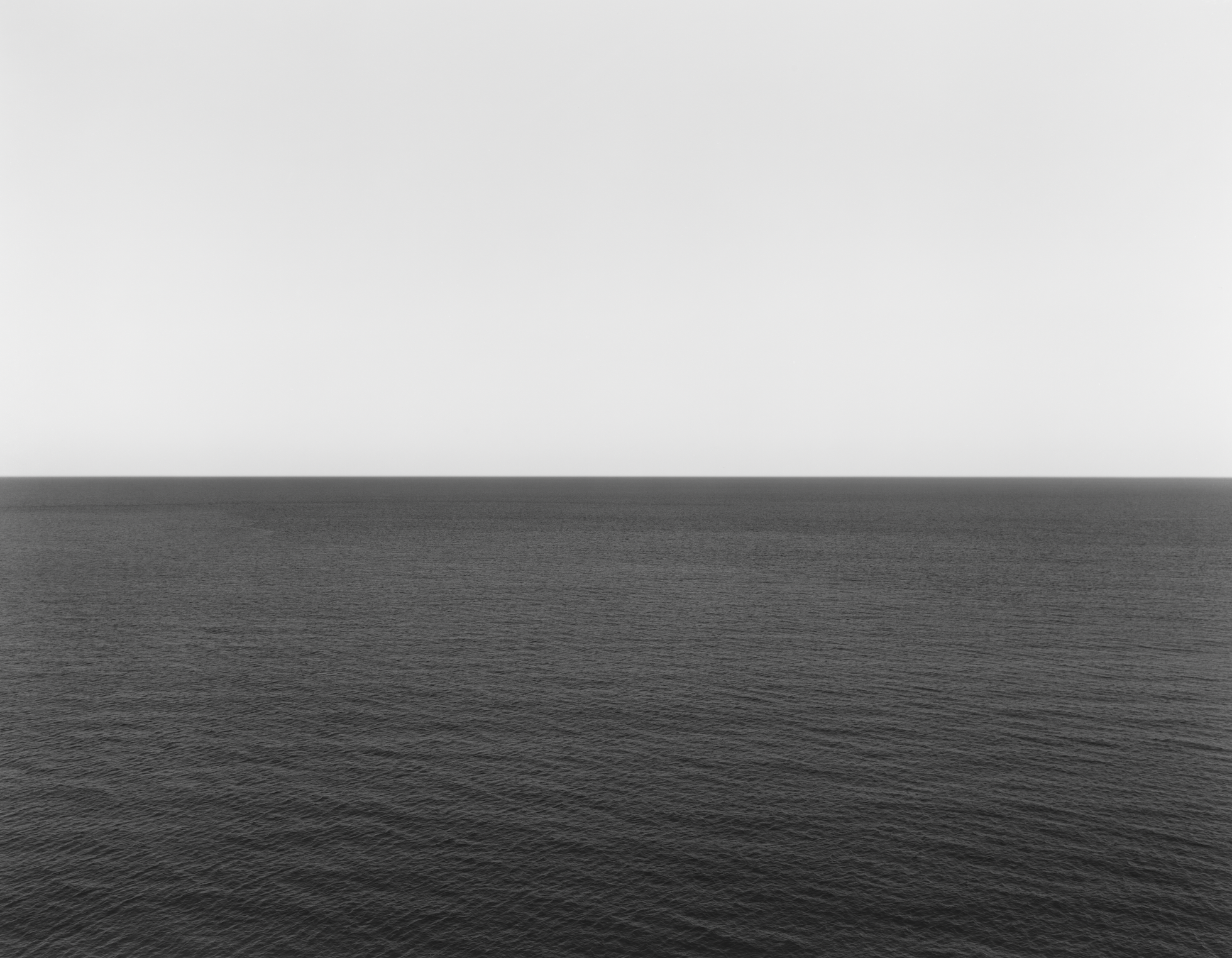
Hiroshi Sugimoto Caribbean Sea, Jamaica, 1980 / ©Hiroshi Sugimoto
Hiroshi Sugimoto continues to talk.
“The concept of time, or maybe better still, the generation of my awareness of life and death, is something that has always been the subject of my explorations. It appeared to me that the mindset that made me reflect on what exactly death means, was the same that reminded me of the fact that I was born in the first place. In other words, at some point in time and place, I suddenly became aware of myself, realized that I existed. I guess it is the same kind of sensation that now also made me realize that I am fading away. I feel that such mental preparedness is something that gradually comes up as we get older.
At the end of the day, it seems to me that being born and dying is just the same thing; it’s all part of the same natural cycle. When I was young, death was for me a scary thing that I was totally unable to comprehend, but maybe it’s in fact quite a gentle kind of fella. The older we get, the weaker our bodies become, so when I imagine that I live on and on, I suppose I would end up in a constant state of physical pain. My eyes grow blind, my teeth fall out, and my body refuses to move as I want it to.
This awareness of life and death, and the fact that I’m doing ‘At the Hawk’s Well’ and ‘Sonezaki Shinju’ – it’s all related to one another.”
Last fall, Hiroshi Sugimoto co-directed two stage productions. In September, “At the Hawk’s Well” by William Butler Yeats was performed on invitation from the Paris Opera’s Palais Garnier, and in October, ”Sonezaki Shinju” was shown at the Lincoln Center’s Rose Theater in New York. “Sonezaki Shinju” was one of the opening performances at the Center’s own White Light Festival, and part of The Japan Foundation’s official “Japan 2019” program aimed to promote Japanese culture in the USA.
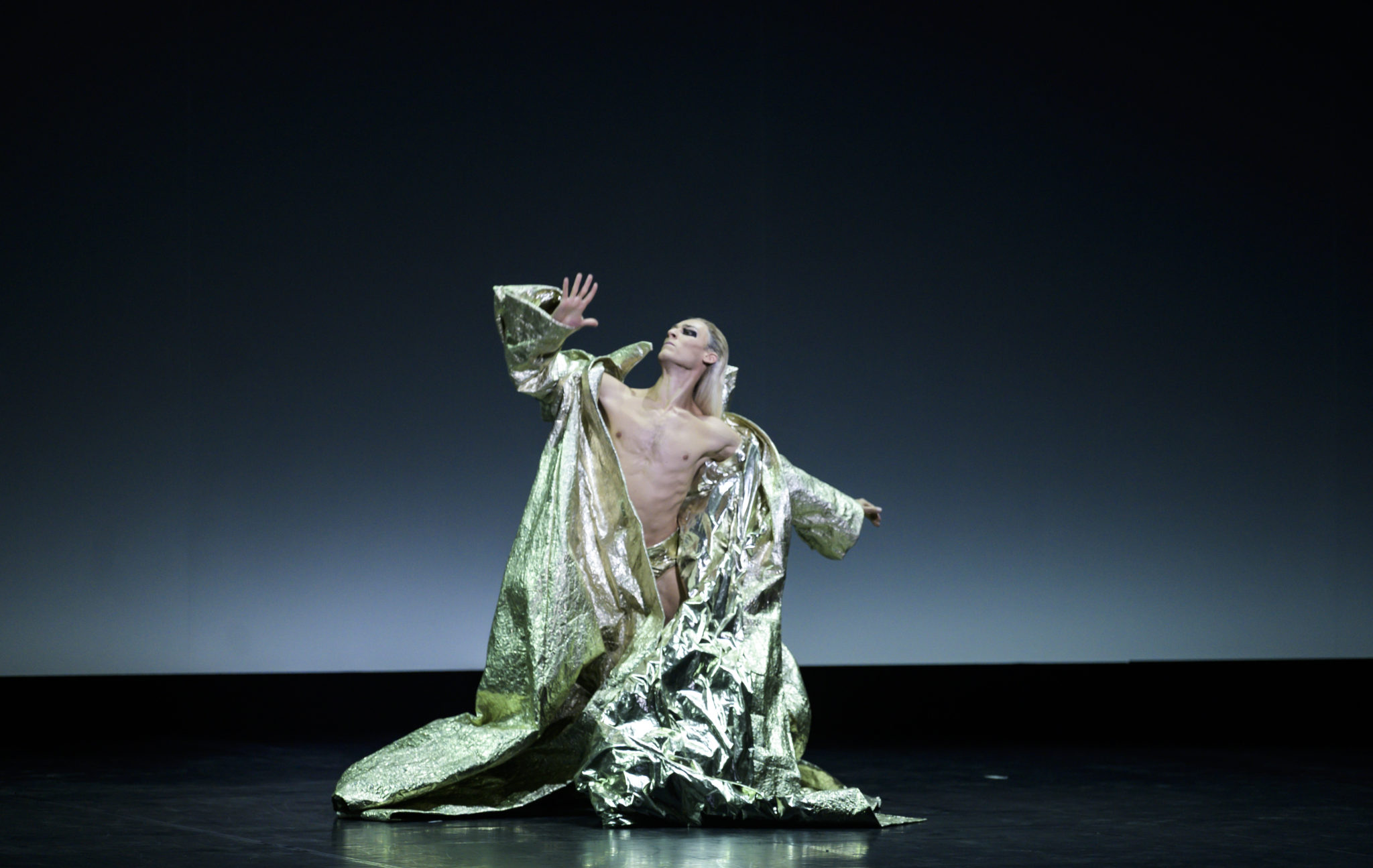
At the Hawk’s Well (H.Sugimoto) Hugo Marchand – Photo julien Benhamou
In 2019, the Académie royale de musique, the predecessor of the Paris Opera so to speak, celebrated the 350th anniversary of its establishment in the era of the “Sun King” Louis XIV. One of the premiere performances in the fall program of this commemorable year was “At the Hawk’s Well.” Yeats, a poet and mystic who was fascinated by Celtic legends and myths, wrote this ballet piece inspired by Japanese Noh approximately 100 years ago. He must have been so intrigued by Noh because of its notion as kind of fantasy theater in which the spirits of the dead are being summoned on stage.
Q: How would you define the meaning of Noh?
A: The liquefication of time.
Q: What does that mean?
A: Time flows in a single direction, from the past into the future, but Noh suspends this law and thereby liquefies time.
Q: A kind of time machine?
A: Dreams function as vehicles for that. It’s called illusion.
(from Hiroshi Sugimoto, Time Exposed, Shinchosha 2005)
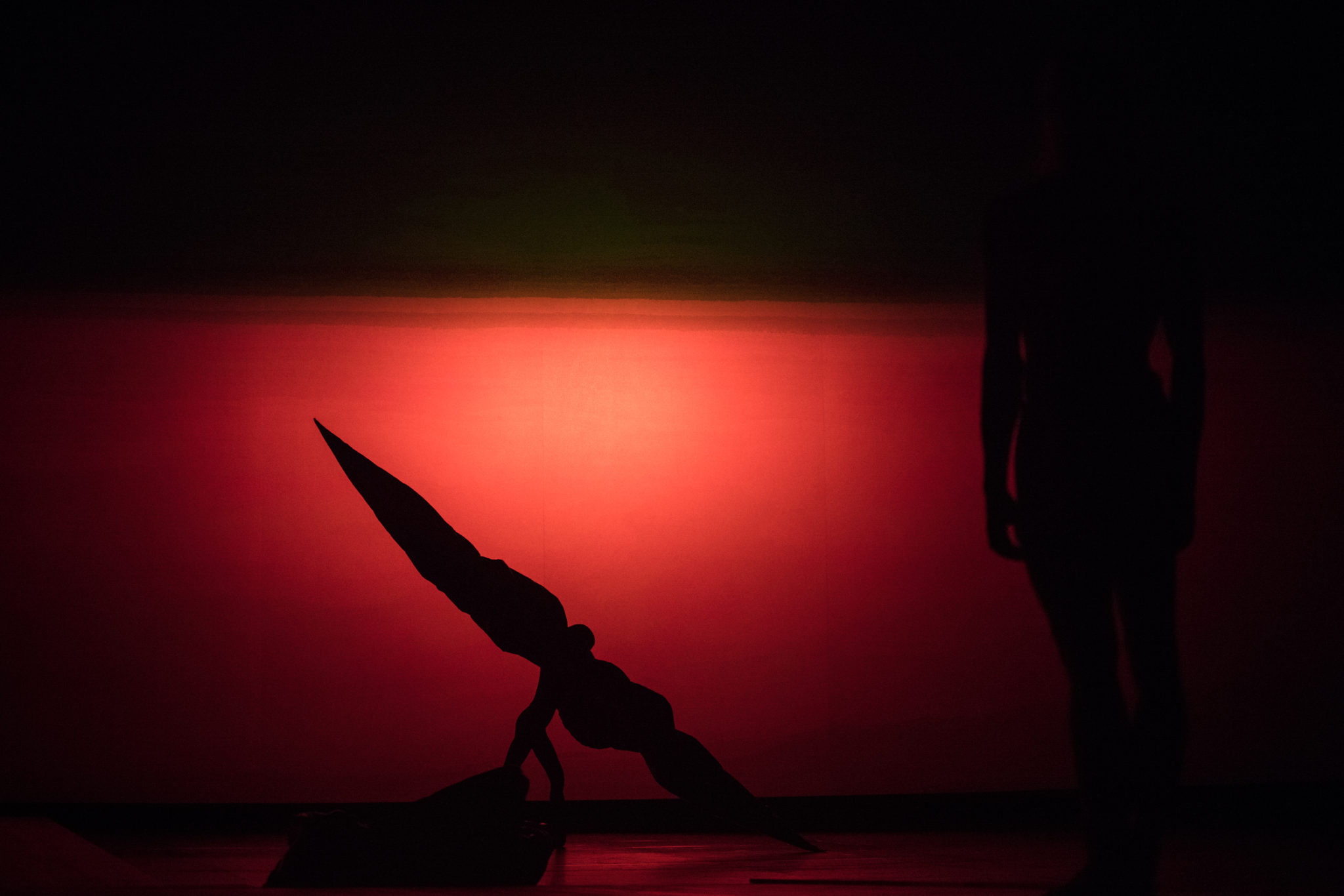
At The Hawk’s Well (Hiroshi Sugimoto) ©Ann Ray
Yeats studied Noh from the drafts of Ernest Francisco Fenollosa, an American art historian specializing in eastern art, and eventually wrote “At the Hawk’s Well” that was first staged in 1916 in London in a dance theater format. In Japan, the material was first shown in 1949 in the form of a Shinsaku(new)-Noh piece by Noh scholar Mario Yokomichi, titled “Taka no izumi (The Hawk Spring),” and was further developed into the Shinsaku-Noh piece “Takahime (The Hawk Princess)” with Hisao Kanze playing the lead in 1967. This was the work that Yokomichi became mostly known for.
The Celtic prince Cu Chulainn comes to a dried up well in the mountains on a solitary island in the far-off sea. He made the journey to the well because he had heard that those who drink water from the well are granted eternal life. However, he finds the well guarded by the spirit of a hawk in the form of a woman, and there is also an old man who has reportedly spent fifty years there waiting for water to well up. During those fifty years, it happened three times that water came up, but each time the man fell asleep as soon as the hawk began to dance, so he never managed to drink. As the prince listens to the man’s story, the hawk raises a cry and begins to dance again. Enchanted by the hawk lady, the young man instantly falls asleep, and he too is unable to drink the coveted water.
Now what did Sugimoto make out of the material? The most characteristic element of the stage set was a T-shaped hanamichi kind of passageway from the back of the stage into the audience, made of plain wooden boards. The equivalent in Noh is the so-called hashigakari bridgeway. In the background was an arch-shaped structure onto which imagery was projected. As the story is set on a solitary island, Sugimoto initially considered using projections of his “Seascapes,” but eventually opted to use items from his new “Opticks” series. The “Opticks” works capture colors as dispersed through refractions of light through a prism. When looking at them individually, they are red, blue, and other colors, but they all originate from sunlight.
The scene of Cu Chulainn arriving at the solitary island is accompanied by blue projections evoking images of the sky and the sea. Then appears the old man and talks about his experience at the well, and with the start of the hawk lady’s fierce dance, the projections turn red. It’s an emotionally exciting color. Then things turn white, and time stands still. Now that everything is quiet, the Noh player (Tetsunojo Kanze, and Kisho Umewaka as second cast) finally appears, and talks to the sitting young man. “So, dear Cu Chulainn, did you manage to get the water from the well?” He throws him a cane and disappears. The young man takes the cane and stands up, but he cannot turn back time. It’s as if everything had only happened in his dream. But he does still hold the cane in his hand.
Artist Ryoji Ikeda, taking charge of music for the entire piece, played an important role as well. The music was an essential element for expressing the characteristics of the individual scenes as well as the aspect of continuity.
“I conceived the piece scene by scene. This or that character would appear in this scene, and there would be a group dance in the next one. Something like that. I started off by making dozens of drawings to be used as a basic script. They mostly consisted of four frames, illustrating how things proceed from one scene to the next; when Cu Chulainn appears, when the old man appears, and where the well is. My idea for the climax was to have very strong light coming out of the well, and all that I conveyed through these drawings. That was also to inspire the design of some technical mechanisms, like using some kind of light to illuminate the well from above and make it look as if there’s light coming out of the well. How to stage the “decisive” scene and what to do with the light – it was basically all in the drawings, based of which Ikeda composed the music. Choreographer Alessio Silvestrin had those drawings as well, and came up with detailed diagrams,” explains Sugimoto.
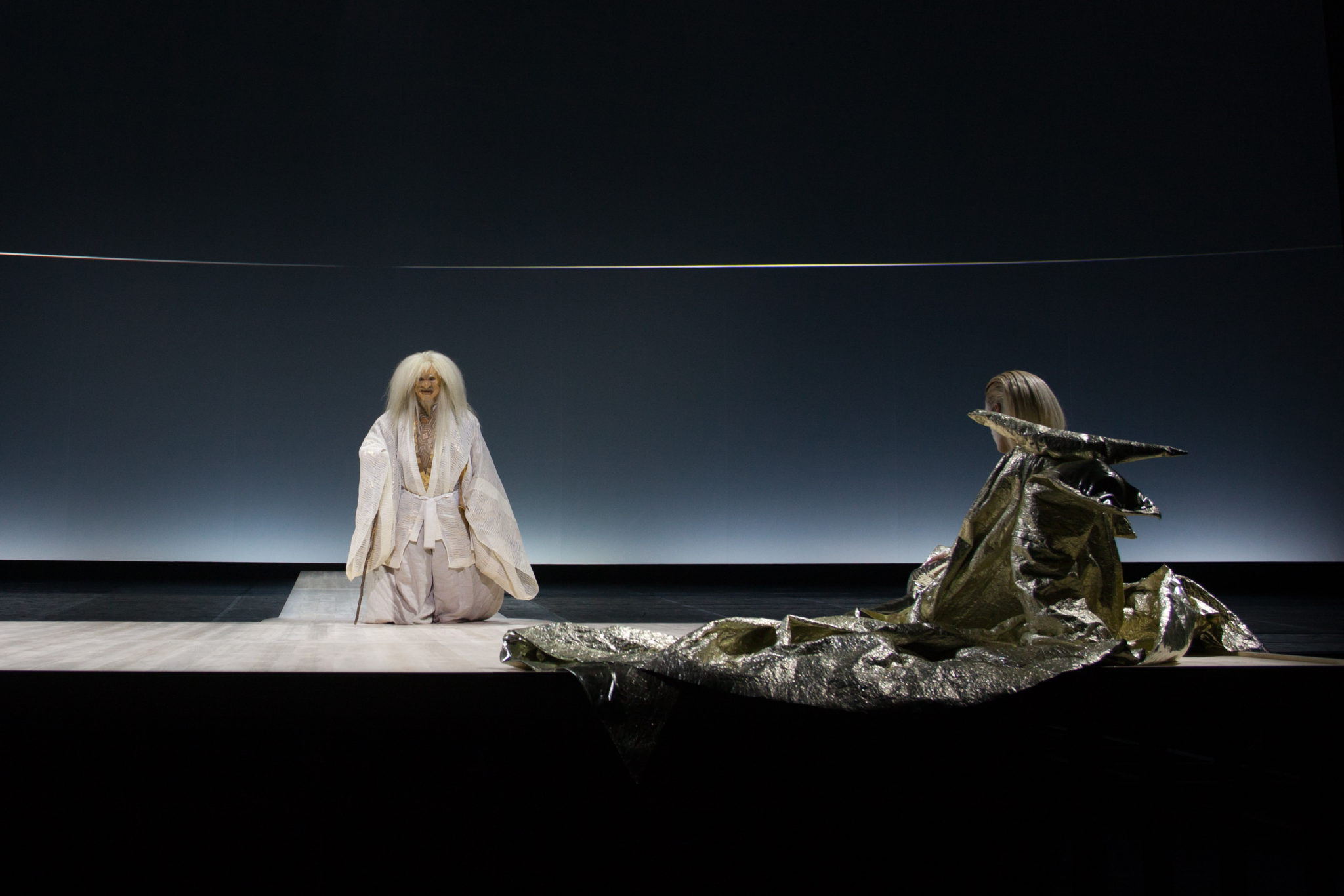
At The Hawk’s Well (Hiroshi Sugimoto), Tetsunojo Kanze, Hugo Marchand ©Ann Ray
What further drew attention was the fact that fashion designer Rick Owens was in charge of the costumes. Owens read the story, listened to Ryoji Ikeda’s music, understood the idea behind Sugimoto’s rendition, and finally applied his own fashion concepts to all these elements. In this sense, the costumes came across as items in which the various creative elements that each individual involved has contributed to the piece, were consolidated quite naturally. Owens refers to John Chamberlain’s sculptures as a source of inspiration for his costumes, and their shapes did indeed seem to be aiming to extend the human body. The costumes don’t look out of place even when worn next to a Noh player on the same stage.
When the hawk lady with her entirely red body and wings longer than her height appears, the lighting turns red. Then again, the stage is also very effectively shrouded in darkness. Human life, the dream and attachment to immortality, and on the other hand, the seduction of death. After performing her dance from one corner of the stage to the other, the woman spreads her sings and flies away.
Let me briefly outline how Sugimoto got to work on this piece to be performed for the 350th anniversary of the Paris Opera. When “Sugimoto Bunraku Sonezaki Shinju” was staged at the Theatre de la Ville in Paris in 2013, Benjamin Millepied, who had been informally appointed as artistic director of the Paris Opera at the time, was in the audience, and reportedly got in touch with Sugimoto the next day to offer doing something together at the Opera. After that, the two of them eventually met up several times, whereas Sugimoto suggested right from beginning, “If we are going to do it at the Opera, then let’s do ‘At the Hawk’s Well’.”
“It seems to me like a strange coincidence that Yeats saw Fennollosa’s drafts that were in the possession of Ezra Pound, and eventually wrote the original material based on these. In addition, we also showed ‘Takahime’ at Mori Art Museum in 2005. That was the original Noh version, based on the idea to recreate the premiere performance with dancer Michio Ito, who went on to contribute to the completion of “At the Hawk’s Well.” I thought it would be interesting to perform it once again in Paris, this time with a dancer from the Opera.”
Even though Millepied was later replaced by the current artistic director, Aurélie Dupont, that idea was ultimately realized.
The performances of “Sugimoto Bunraku Sonezaki Shinju” at the Rose Theater at New York’s Lincoln Center started on October 19, shortly after the closing day of the “At the Hawk’s Well” shows at the Paris Opera. As mentioned above, “Sonezaki Shinju” was part of The Japan Foundation’s official “Japan 2019” program, and one of the opening performances at the White Light Festival.
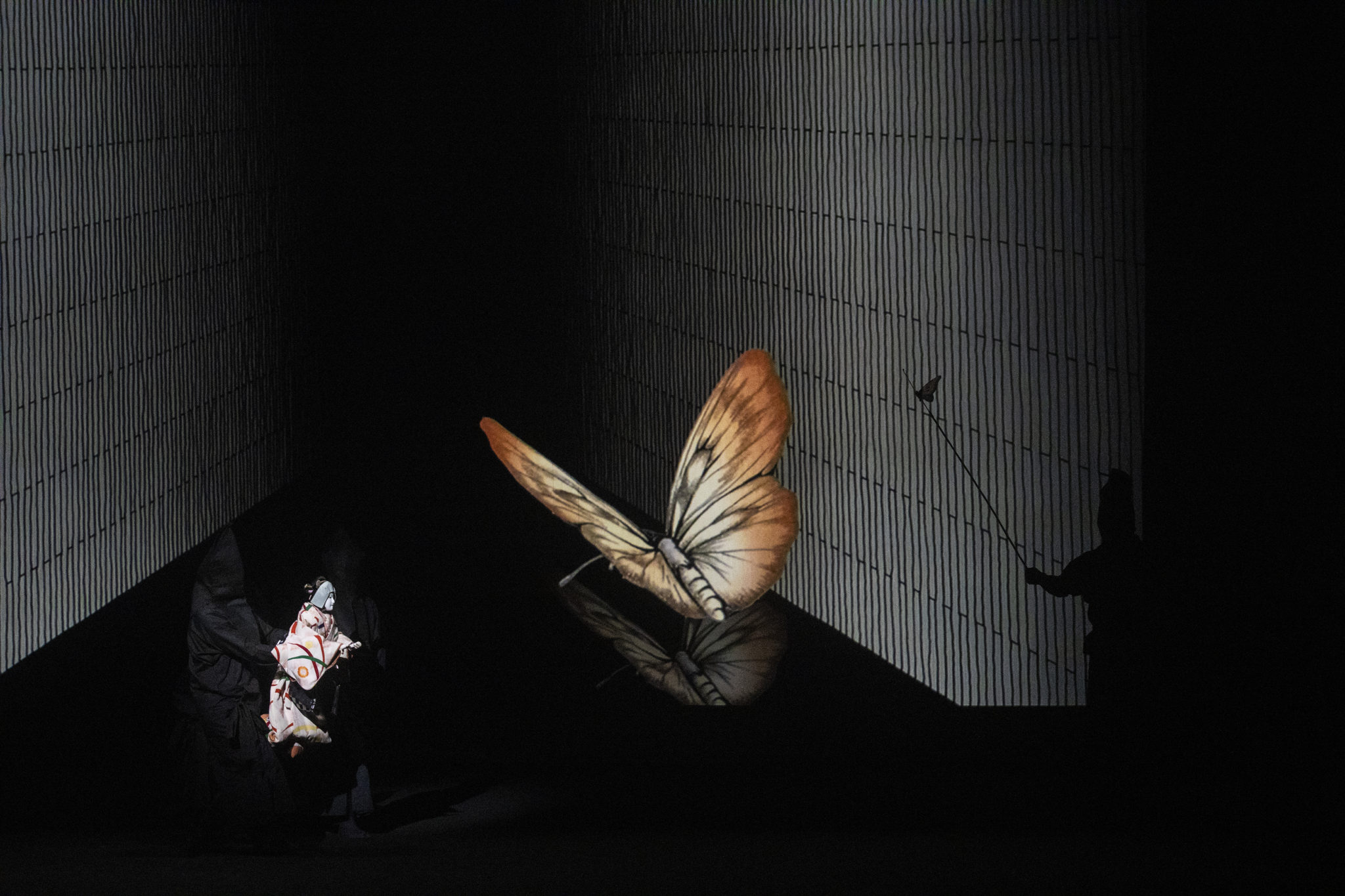
©Yuji Ono, Courtsey of The Japan Foundation
The first Sugimoto Bunraku performance took place in 2011, with a few especially characteristic features. Puppets emerged from a completely dark stage, and different from regular bunraku, the presence of the puppeteers was thoroughly eliminated. The stage set in the background wasn’t entirely visible, but only such elements as the torii (gates) of a shrine, shop curtains or bridge rails were highlighted as symbolic expressions of the respective scene’s location or situation.
Written by Chikamatsu Monzaemon in 1703, “Sonezaki Shinju” tells the story of two lovers who committed double suicide in a forest near the Tsuyutenjin Shrine in Sonezaki, Osaka Nishinari. Ohatsu, one of the famous courtesans in Osaka, and Tokubei, a merchant at a soy sauce shop , vowed eternal love to each other. Blamed and cheated by his friend Kuheiji out of his money that he was going to give Ohatsu so she could decline marriage with a man she didn’t love, Tokubei, in order to prove his innocence, expresses the wish to marry Ohatsu in the afterworld, so the pair choses to take their lives. It is a beautiful story about what became a prime example of “love that is rewarded with the promise of reaching Nirvana in the afterlife.”
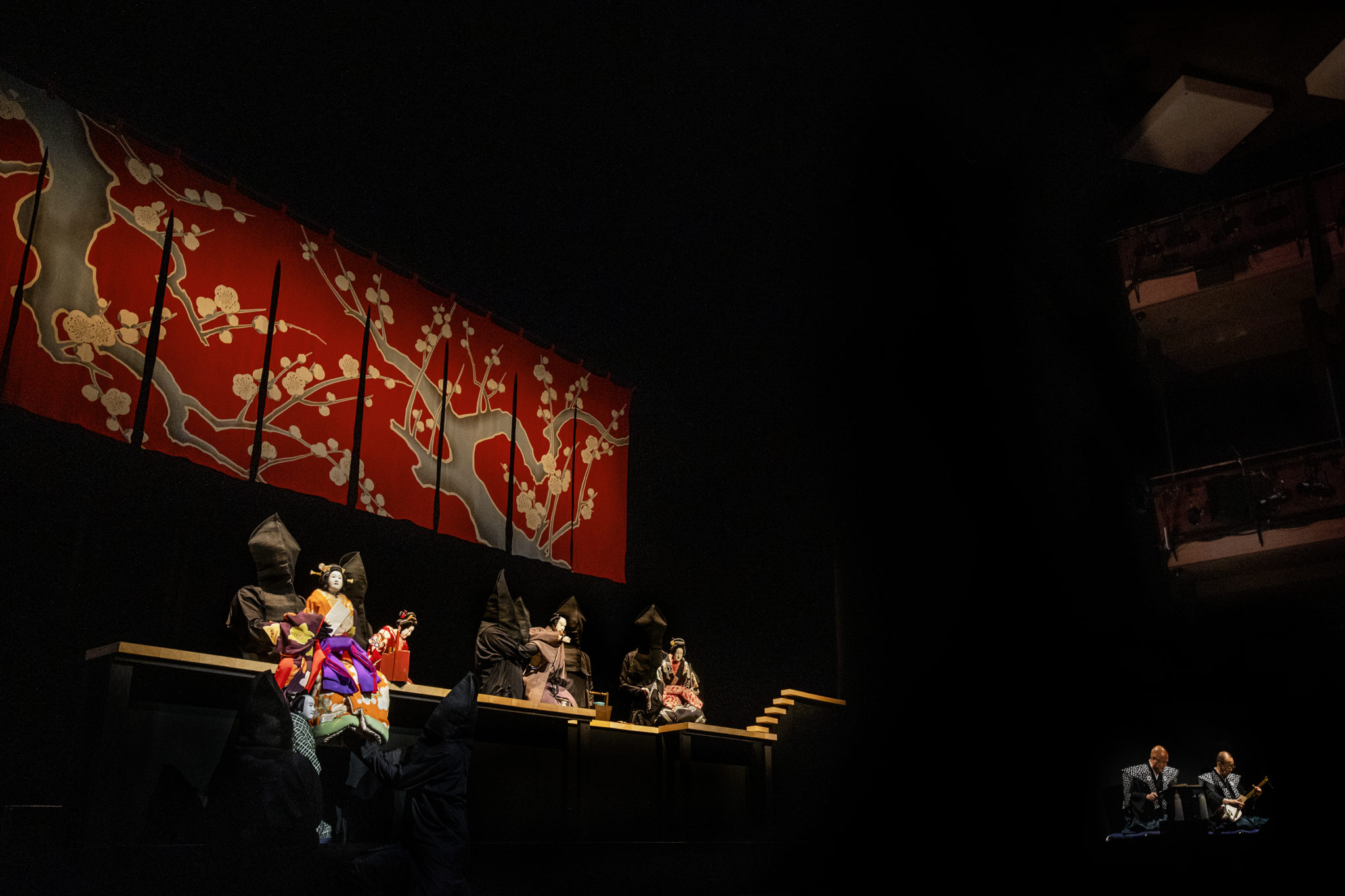
©Yuji Ono, Courtsey of The Japan Foundation
Staged in Paris, “At the Hawk’s Well” was about the human craving for eternal life, while in contrast, “Sonezaki Shinju” in New York illustrated the choice of death for the sake of eternal love. Seemingly polar opposites, both pieces deal in fact with the unfulfilled human desire for something that lasts forever.
Even though there is a crucial difference in the basic religious outlook, God and Buddha are probably both manmade concepts. Deities are modeled after the human being as perfect examples of the human species. But what does it mean for a human to be called to heaven by God? Should we aim to get to the place that Buddha admits us to? It appeared to me that this was the big topic that Hiroshi Sugimoto intended to address in the two pieces that were stage around the same time last fall.
“Approaches may be different, but to me it seems that they’re all aiming for the same thing.” (Hiroshi Sugimoto)
In Sugimoto’s case, this is not limited to these two recent stage productions. One may say that, also in all of his other works, he has been translating unfulfilled human dreams and desires into visible/tangible formats. He creates “Diorama” that showcase living beings in all kinds of situations, “under the eyes of god” beyond space and time; “Theaters” in which stories and histories are taken out of their time frames; and “Seascapes” that countless numbers of human beings have been viewing since ancient times. I was reminded once again of the fact that each of the tranquil sceneries that Sugimoto continues to depict in his works represents a stage in his untiring quest for the genesis of human awareness.
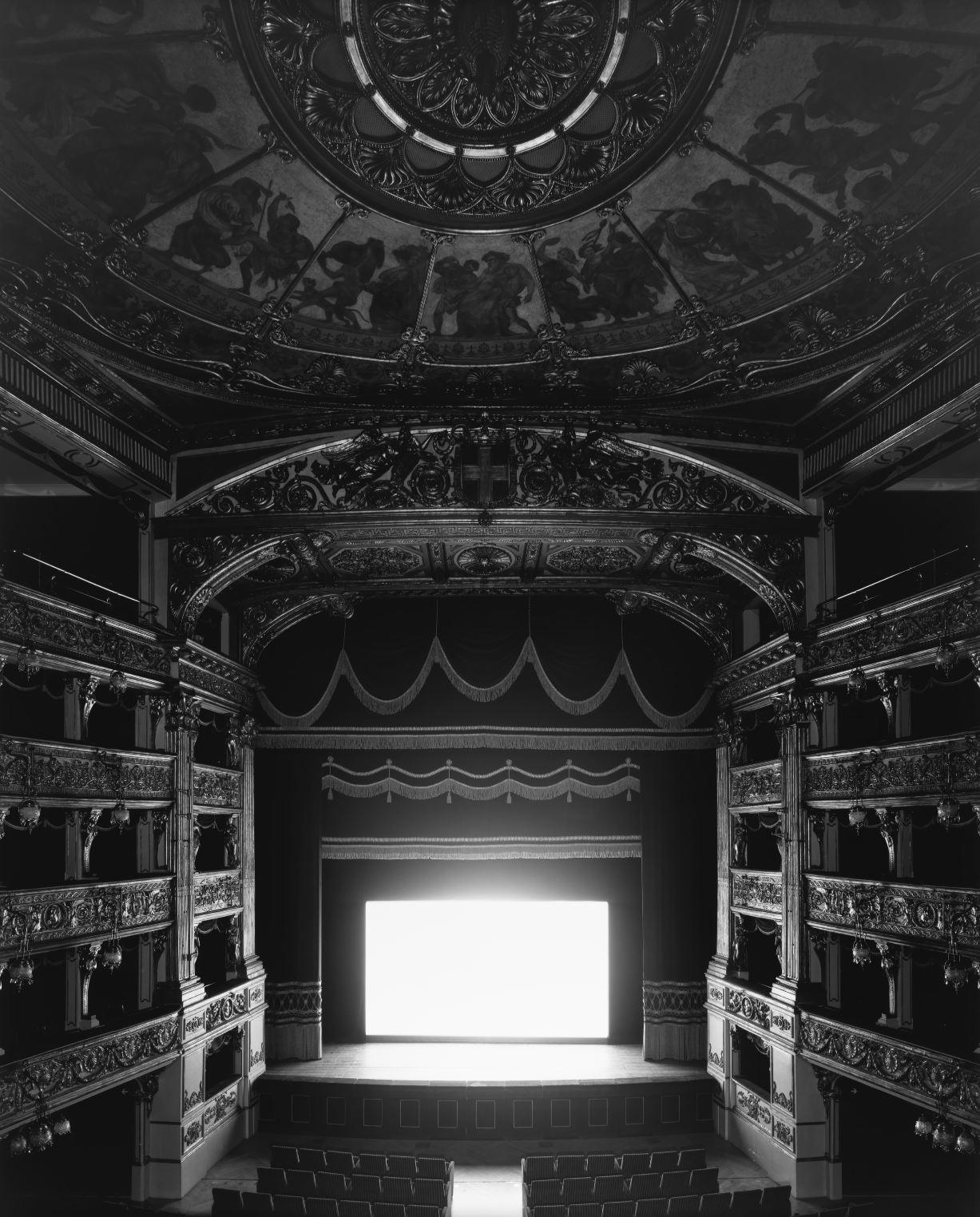
Hiroshi Sugimoto Teatro Carignano, Torino, 2016 / ©Hiroshi Sugimoto
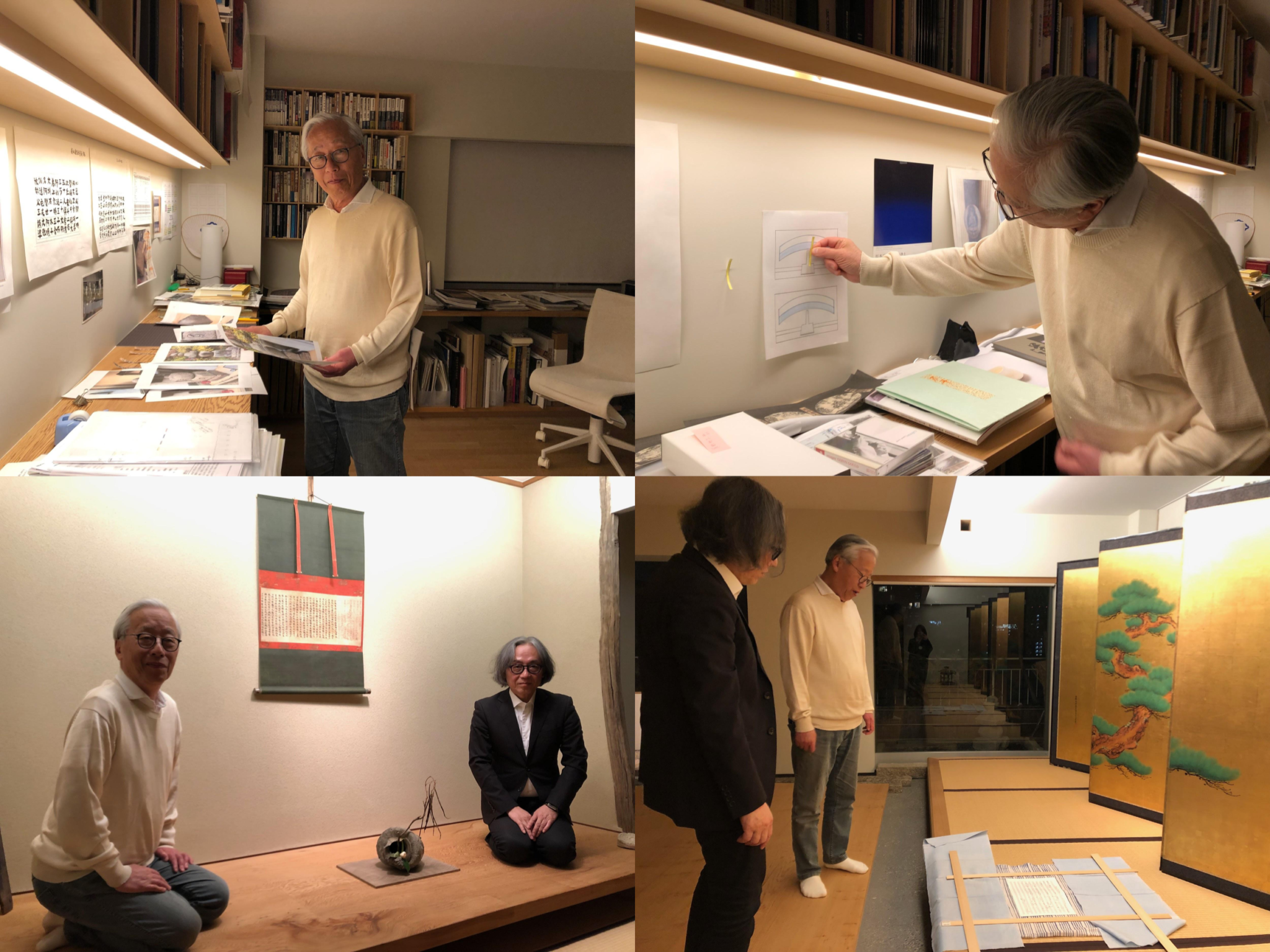
Main reference literature, materials
– Hiroshi Sugimoto, Time Exposed (Shinchosha, 2005)
– Seigo Matsuoka, Fragile: A departure from weakness (Chikuma Shobo, 1995)
– William Butler Yeats (transl. Mineko Matsumura), At the Hawk’s Well (Kadokawa Bunko, 1953)
– Tetsuya Ozaki, “Hiroshi Sugimoto’s ‘At the Hawk’s Well’” in Fujingaho, January 2020 issue
– Mariko Omura “Opera Garnier, ’At the Hawk’s Well’ de Hiroshi Sugimoto no sekai o tanno,” published on FIGARO.jp








